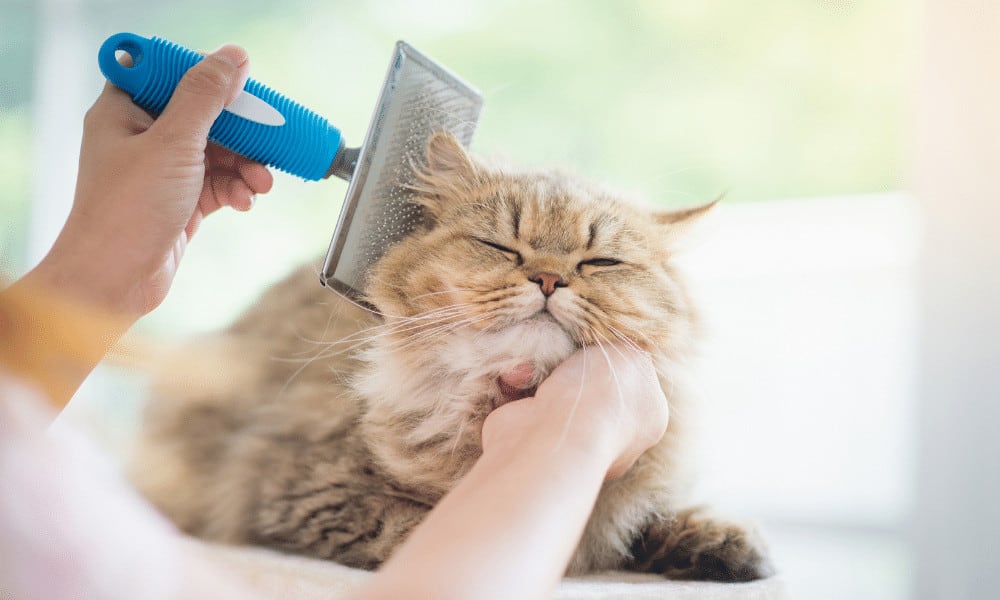Did you know that proper hygiene and grooming will keep your pet comfortable and healthy? While you might have a pet that doesn’t need to go to the groomer for regular baths or haircuts, your pet still needs basic care like brushing and nail trimming. It’s best to start when your pet is young to get them used to have their paws handled and teeth brushed. However, it is never really too late to get started.
Trimming Your Pet’s Nails
Did you know that trimming your pet’s nails can help prevent musculoskeletal abnormalities? Even though it may be stressful for some pets to have their paws handled, it’s important to make the experience positive and work with them.
Don´t wait too long with trimming your pet´s nails
When your pet’s nails get long, they can push the nail up and into the nail bed. This adds extra stress and strain on the toes, and it can be very uncomfortable. Have you ever tried wearing a pair of shoes that were too small? It’s a similar situation. Over time, this pressure can cause the paw to splay and even remodel the legs. While not every pet develops arthritis from this, it can certainly be a contributing factor.
Another unfortunate consequence of not trimming your pet’s nails is that they can grow too long. Over time, the nail can start to spiral or even grow into the paw pad. This can be incredibly painful and also contribute to severe infections, often necessitating antibiotics and pain-relieving medications.
The longer you wait to have your furry friend’s nails trimmed, the greater the chance of the experience being uncomfortable. They may need more frequent nail trimmings because the blood vessel found within each nail may be further into the nail. This is painful if it is clipped, not to mention potentially lead to bleeding that can be difficult to control.
Brushing Your Pet’s Teeth
One of the most common disease problems seen by veterinarians is periodontal disease. Aka inflammation of the structures supporting the tooth. In addition to being a painful condition, periodontal disease may contribute to teeth becoming loose and falling out. Tooth root abscesses may occur as well.
Brushing your dog´s or cat’s teeth regularly is a great way to help prevent periodontal disease and to keep the teeth as healthy as possible. This can be challenging, but many pets are amenable to having their mouths touched. You just need a bit of patience and positive reinforcement.
That´s How You Keep Your Pet´s Teeth Clean and Healthy
The good news is that there are a variety of tools you can use to help clean your pet’s teeth. Start with a toothpaste designed for pets, many of which are enzymatic and help clean the teeth even if you can’t get a good brushing motion going while your pet tries to eat the toothpaste. (These products are generally safe to ingest and flavoured to help your pet look forward to this process.)
In addition to regular brushing, there are also water additives that can help fight plaque. Your veterinarian may even recommend certain dental chews, although they may not be good options if your dog or cat doesn’t actually chew the product. However, some companies also make food additives to help fight dental disease.
So Why Should You Brush Your Pet´s Teeth?
A good dental care regimen is important for more than just keeping your dog or cat’s teeth pearly white. Dental disease has been linked to a variety of health conditions, such as heart disease. Chronic inflammation can impair your pet’s immune system from functioning normally.
Cleaning Your Pet’s Ears
Do you have a dog with long, floppy ears or a pet with folded over ears? You may have already experienced an ear infection with them and know how uncomfortable that can be.
While you can’t prevent every possible ear infection, cleaning your pet’s ears regularly can help minimize the risk of some cases developing. Keep in mind that some pets need little more than occasionally having their ears gently wiped out with a cotton ball. If your pet is prone to ear infections, he might need more regular cleanings, particularly after activities such as playing at the beach.
What Do You Need for Cleaning Your Pet´s Ears?
The sheer variety of ear cleaning products can seem overwhelming. Your veterinarian can likely make a recommendation about an ideal product for your dog or cat, such as a ceruminolytic product, which helps break up ear wax for easier removal. You will generally want to avoid products with rubbing alcohol or hydrogen peroxide as they can sting and even potentially contribute to inflammation within the ear canals.
When cleaning your pet’s ears, you’ll want to avoid using cotton swabs, as they can cause trauma to the ear canal, even pushing debris further into the canal where it might become impacted or pierce the ear drum. Instead, use cotton balls or gauze squares. For periodic wiping, you can use a clean, soft cloth or purchase ear wipes.
The Importance of Ear Cleaning
Wax buildup can set the scene for an ear infection to develop, as warm and moist environments can be a great place for yeast and bacteria to proliferate. Lots of ear wax can also make it harder for your furry friend to hear things because the sound can’t conduct through their ears.
Conclusion
While many pets will let you take care of these regular grooming needs at home, some pets are anxious or wiggly, making it hard for them to get the care they need. You should discuss these concerns with your veterinarian. A mild sedative or calming product might make it easier on them — and you — to get the job done. Keep in mind that these are services we now offer as well, so you don’t have to take your pet to high-stress locations just to have their nails trimmed.

